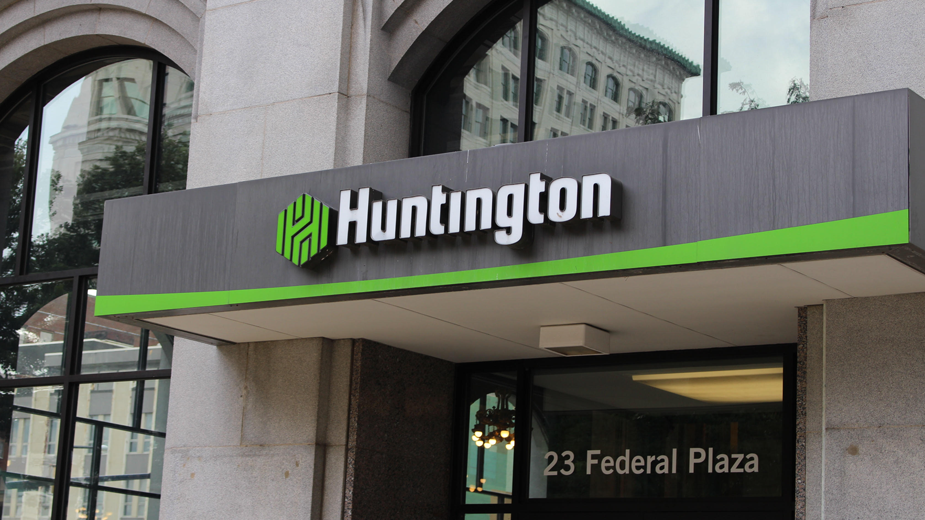Huntington-TCF Merger All About Scaling Up, CEO Says
YOUNGSTOWN, Ohio – When its merger with TCF Financial Corp. is completed next year, the new scale of Huntington Bank will allow it to invest more in technology and expand its reach among small businesses, CEO Stephen Steinour says.
The merger between TCF and Huntington Bancshares, announced Monday, will bring an additional 1.5 million customers and $48 billion in assets to Huntington. The all-stock merger, which will increase Huntington’s market value to $22 billion, was announced late Sunday night and is expected to be completed by “late in the second quarter” of 2021, Steinour says.
“In this business right now, scale matters. The pandemic has accelerated digital expectations from consumers and businesses, so we have to do more with mobile faster,” Steinour told The Business Journal Wednesday during a phone interview. “Companies like Amazon and Apple have created expectations of ease and new expectations that banks have to emulate. We want to stay No. 1, so we have to do more. That means more investment dollars, which this new scale gives us.”
Over the next three years, Huntington will increase its technology investment by $150 million and continue to build on its existing platform. The bank’s mobile app was named No. 1 among regional banks – defined as those $55 billion and $150 billion in deposits – for customer satisfaction by J.D. Power & Associates earlier this year. Without the merger with TCF, that investment is less feasible, the CEO says.
“They’re $50 billion, we’re $120 billion. Start multiplying and put that together; you can allocate all this investment over a much bigger base,” Steinour says. “Bringing in TCF is very helpful to us.”

That sentiment is shared by industry analysts. On Monday, UBS analyst Brock Vandervliet told Barron’s that the move to digital products has been accelerated by the coronavirus pandemic and will be a driving force behind bank moves in the coming year.
“What’s different now is that COVID has reordered the importance of bank delivery channels with branch transactions declining at the expense of digital,” he said. “Banks are now in a much more compelling position to extract cost savings from the branch network and drive pre-provision net revenue.”
Observed RBC Capital Markets analyst Jon Arfstrom, “This combination looks like a strong strategic fit and we believe the numbers make sense.”
Stock markets, however, aren’t necessarily as enthusiastic about the merger. Huntington’s stock price fell from $12.88 at the market’s opening Monday to $12.21 by noon that day. It’s since rebounded to $12.52 as of 5 p.m. Wednesday.
Once the merger is complete, TCF Bank’s branches and ATMs will be rebranded as Huntington Bank sites. The deal will expand Huntington’s presence to include Minnesota, Wisconsin, South Dakota and Colorado, as well as triple the number of branches in the Greater Chicago area.
The expansion of its footprint will allow Huntington to offer one of its “core competencies” to more businesses, Steinour says.
Nationally, Huntington Bank is the nation’s largest provider of 7(a) loans from the Small Business Administration and, locally, administered more Paycheck Protection Program loans than any other bank, totaling $216.3 million. It was the only bank to surpass $200 million lent in the five-county area.
“We think we’ve built over time a reasonably strong small-business program. We’ve been the No. 1 SBA lender three years in a row, but we only lend in our seven states [currently]. The No. 2 lender is in 48 states and the No. 3 is as well,” Steinour says. “It’s something we want to do more and more of. It’s the lifeblood of these communities. The more capability we have around business lending – including but not limited to SBA loans – the stronger the communities will be.”
Bringing TCF into the fold may also allow Huntington Bank to enter new business segments. Steinour points to TCF Inventory Finance, which provides financing to manufacturers, distributors and dealers of recreation vehicles, lawn and garden equipment, marine vehicles and consumer electronics to nearly 12,000 clients. It’s a segment that Huntington has never been in.
“We have a broader product and service menu than TCF does; again, scale matters,” the CEO says. “I’m sure there are nuances in their products that we’ll replicate and I’m sure there are products that Huntington has available that aren’t included in what TCF offers.”
The bank’s expansion won’t negatively affect existing customers, he added, with market presidents providing leadership at the local level. He cites Bill Shivers, president of Huntington’s Canton/Mahoning Valley region, who lives in the Valley and participates in community efforts, such as serving as the chairman for United Way campaigns and on the boards for local chambers of commerce in the Akron-Canton area.
“It’s why we operate locally. It’s why we have people like Bill Shivers in the Mahoning Valley. He lives there and is part of the community,” Steinour says. “Our size enables us to do more and more things. It’s about the scale of business. Do our customers want us to do more over mobile? Absolutely. Are they looking for us to have similar capabilities that Amazon does? I suspect they will. Maybe not today, but they will as we offer more and more.”
And for current TCF customers that will be walking into branches as Huntington clients this time next year, Steinour assures them that the service they received from TCF will, at the very least, be matched by Huntington.
“We’re eager to go forward, but we want to take care of everyone along the way. That’s what we’re asking TCF team members to do. We want them to look out for and help their customers while this is pending,” he says.
“This is going to be good for our customers. We’re going to be able to make it a lot easier for them – small businesses, large businesses and consumers – to get a full suite of banking products and services through us.”
Copyright 2024 The Business Journal, Youngstown, Ohio.


